Spill Kits: Essential Tools for Effective Spill Response and Environmental Protection
Date Posted:26 August 2024
Embracing the benefits of spill kits promotes environmental stewardship, emergency preparedness, and sustainable practices in maintaining safe and compliant workplaces.
Spill kits are specialized containers or packages containing materials and equipment designed to contain and clean up hazardous spills promptly. They are essential for maintaining workplace safety, environmental compliance, and minimizing the impact of spills on personnel and the environment. This article explores the functionality, types, components, benefits, applications, and considerations for choosing and using spill kits across various industries.
Functionality and Components of Spill Kits
1. Rapid Response Capability: Spill kits enable quick response to accidental spills of hazardous substances such as chemicals, oils, and liquids. They contain all necessary materials and equipment for immediate containment, absorption, and cleanup of spills to prevent contamination and environmental damage.
2. Comprehensive Containment Solutions: Spill kits include absorbent materials such as pads, socks, pillows, or granules designed to contain and absorb spilled liquids effectively. They also contain personal protective equipment (PPE), disposal bags, and cleanup tools to facilitate safe and efficient spill management.
3. Versatility in Applications: Spill kits are available in various types and sizes tailored to different spill volumes, types of liquids, and specific industry requirements. They are used in industrial facilities, laboratories, transportation, and other environments where hazardous materials are handled or stored.
4. Compliance with Regulations: Using spill kits ensures compliance with environmental regulations and safety standards governing spill prevention, containment, and cleanup. They help organizations mitigate risks, protect workers, and prevent potential fines or penalties associated with spills.
5. Training and Preparedness: Effective spill response requires trained personnel who understand spill kit contents, procedures, and safety protocols. Training programs educate employees on spill prevention, response procedures, and proper use of spill kits to enhance preparedness and minimize spill impacts.
Types of Spill Kits
1. Universal Spill Kits: Universal spill kits are designed to handle a wide range of non-aggressive liquids, including oils, solvents, and water-based fluids. They are versatile and suitable for general industrial applications where multiple types of spills may occur.
2. Oil-Only Spill Kits: Oil-only spill kits are specifically designed to absorb hydrocarbon-based liquids such as oils, fuels, and lubricants. They repel water and selectively absorb oils, making them ideal for marine environments, oil refineries, and transportation industries.
3. Chemical Spill Kits: Chemical spill kits are equipped with absorbents capable of handling aggressive liquids, acids, bases, and hazardous chemicals. They include specialized PPE and neutralizing agents to safely manage chemical spills in laboratories, manufacturing plants, and chemical storage areas.
4. Hazmat Spill Kits: Hazmat (Hazardous Materials) spill kits are designed for responding to spills involving toxic, corrosive, or unknown substances. They include absorbents, PPE with respiratory protection, and containment tools to manage emergencies requiring specialized handling and disposal procedures.
5. Vehicle Spill Kits: Vehicle spill kits are compact and portable, designed for use in transportation vehicles such as trucks, buses, and service vehicles. They include absorbents and containment tools tailored for responding to fuel, oil, or hydraulic fluid spills during transport or roadside emergencies.
Benefits of Spill Kits
1. Minimized Environmental Impact: Spill kits prevent hazardous substances from spreading and contaminating soil, waterways, and ecosystems. They contain spills at the source, reducing environmental cleanup costs and mitigating long-term environmental damage.
2. Enhanced Workplace Safety: Spill kits protect employees from exposure to hazardous materials by providing PPE and containment tools for safe spill response. They minimize health risks associated with chemical exposure, slips, and falls during cleanup activities.
3. Operational Continuity: Prompt spill response with spill kits minimizes downtime and disruption to operations. By containing and cleaning up spills quickly, organizations maintain productivity, prevent equipment damage, and ensure regulatory compliance.
4. Cost Efficiency: Using spill kits reduces cleanup costs associated with spills, including labor, materials, and environmental remediation expenses. They minimize potential fines, penalties, and liabilities resulting from non-compliance with environmental regulations.
5. Emergency Preparedness: Spill kits contribute to emergency preparedness plans by ensuring organizations are equipped to respond effectively to spills. They promote proactive risk management, employee training, and readiness for unforeseen spill incidents.
Spill kits are critical tools for preventing, containing, and cleaning up hazardous spills in various industries and environments. By facilitating rapid response, minimizing environmental impact, and enhancing workplace safety, spill kits support regulatory compliance and operational continuity.
Investing in appropriate spill kits tailored to specific hazards and operational needs ensures organizations are prepared to manage spills effectively, protect personnel, and mitigate risks associated with hazardous materials. Embracing the benefits of spill kits promotes environmental stewardship, emergency preparedness, and sustainable practices in maintaining safe and compliant workplaces.
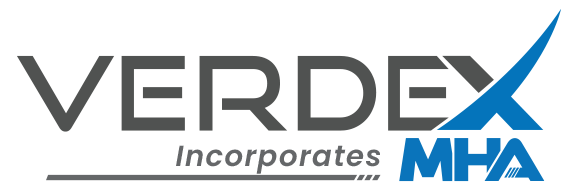
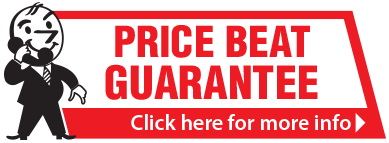























































































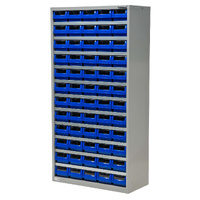



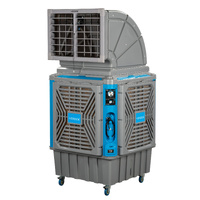



















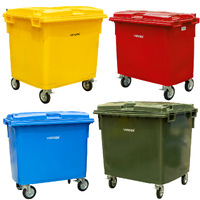














 Trolleys & Hand Trucks
Trolleys & Hand Trucks Cage Trolleys
Cage Trolleys Cleaning Carts & Trolleys
Cleaning Carts & Trolleys Construction Trolleys
Construction Trolleys Custom Trolleys
Custom Trolleys Hand Trucks & Dollies
Hand Trucks & Dollies Laundry/Linen Trolleys
Laundry/Linen Trolleys Lifting Trolleys
Lifting Trolleys Order Picking Trolleys
Order Picking Trolleys Panel Cart Trolleys
Panel Cart Trolleys Platform Trolleys
Platform Trolleys Powered Trolleys
Powered Trolleys Shelf & Tiered Trolleys
Shelf & Tiered Trolleys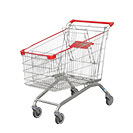 Shopping Trolleys
Shopping Trolleys Stainless Steel Trolleys
Stainless Steel Trolleys Tool Trolleys
Tool Trolleys Utility & Service Carts
Utility & Service Carts Lifting & Handling Equipment
Lifting & Handling Equipment Forklift Attachments
Forklift Attachments Jib Attachments
Jib Attachments Lifting Hoists & Pallet Hooks
Lifting Hoists & Pallet Hooks Load Skates & Tow Tugs
Load Skates & Tow Tugs Manual Stackers & Lifters
Manual Stackers & Lifters Pallet Jacks
Pallet Jacks Pallet Lifters
Pallet Lifters Pallet Rotators & Dispenser
Pallet Rotators & Dispenser Powered Pallet Trucks & Electric Lifters
Powered Pallet Trucks & Electric Lifters Scissor Lift Trolleys and Tables
Scissor Lift Trolleys and Tables Conveyor Equipment
Conveyor Equipment Conveyor Frames & Stands
Conveyor Frames & Stands Roller & Skate Conveyors
Roller & Skate Conveyors Ladders & Access Equipment
Ladders & Access Equipment Container & Yard Ramps
Container & Yard Ramps Ladders & Step Stools
Ladders & Step Stools Work Platforms & Crane Cages
Work Platforms & Crane Cages Drum Handling Equipment
Drum Handling Equipment Drum Storage & Bunding
Drum Storage & Bunding Drum Trolleys & Lifters
Drum Trolleys & Lifters Forklift Drum Handling
Forklift Drum Handling Waste Handling & Bins
Waste Handling & Bins Bin Lifters & Tippers
Bin Lifters & Tippers Plastic Waste & Wheelie Bins
Plastic Waste & Wheelie Bins Steel Waste & Tipping Bins
Steel Waste & Tipping Bins Waste Carts
Waste Carts Dangerous Goods Storage & Spillage
Dangerous Goods Storage & Spillage Aerosol Cans Storage Cages
Aerosol Cans Storage Cages Bunded Pallets & Storage
Bunded Pallets & Storage Corrosive Goods Storage Cabinets
Corrosive Goods Storage Cabinets DG Storage & Trolleys
DG Storage & Trolleys Flammable Liquid Cabinets
Flammable Liquid Cabinets Forklift Gas Storage Cages
Forklift Gas Storage Cages Site Storage
Site Storage Spill Kits
Spill Kits Shelving & Storage Equipment
Shelving & Storage Equipment Stillage & Transport Cages
Stillage & Transport Cages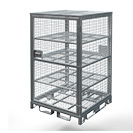 750 Series Cage Configurations
750 Series Cage Configurations Heavy Duty Cabinets
Heavy Duty Cabinets Heavy Duty Shelving
Heavy Duty Shelving Mega Bins & Pallets
Mega Bins & Pallets Packing & Workbenches
Packing & Workbenches Parts Trays & Stor-Pak Bins
Parts Trays & Stor-Pak Bins Pegboard & Louvre Panels
Pegboard & Louvre Panels Plastic Bins & Crates
Plastic Bins & Crates Plastic Handling Solutions Bins
Plastic Handling Solutions Bins Plastic Pallets
Plastic Pallets Stack & Nest Bins
Stack & Nest Bins Pallet Racking Accessories
Pallet Racking Accessories Workplace Equipment
Workplace Equipment Modular Workbenches
Modular Workbenches Electric Height-Adjustable Workbenches
Electric Height-Adjustable Workbenches Floor Matting
Floor Matting General Workplace Equipment
General Workplace Equipment Industrial Weighing Scales
Industrial Weighing Scales Packaging Machinery
Packaging Machinery Stationery Cupboards
Stationery Cupboards Storage and Stillage Cages
Storage and Stillage Cages Tool Trolleys
Tool Trolleys Tooling Cabinets
Tooling Cabinets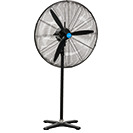 Workshop Fans and Coolers
Workshop Fans and Coolers Safety Barriers, PPE & Signage
Safety Barriers, PPE & Signage Barriers & Bollards
Barriers & Bollards First Aid Equipment
First Aid Equipment Gloves, Knives and PPE
Gloves, Knives and PPE Signage
Signage Cleaning & Site Supplies
Cleaning & Site Supplies Cleaning Equipment
Cleaning Equipment Cleaning Trolleys
Cleaning Trolleys Rubbish Bins
Rubbish Bins Signs & Traffic Supplies
Signs & Traffic Supplies Construction Equipment
Construction Equipment Construction Trolleys
Construction Trolleys Waste Handling
Waste Handling General Site Equipment
General Site Equipment Concrete Equipment
Concrete Equipment Site Storage
Site Storage Lifting Equipment
Lifting Equipment Verdex Specials
Verdex Specials










